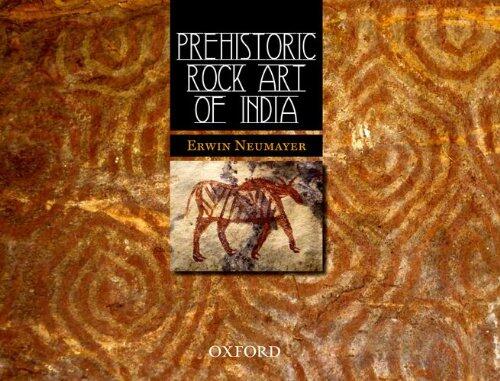An extraordinary book illuminating the rich imagistic life in the subcontinent tens of thousands of years before ancient Indus times by an Austrian pioneer in the field.
The book covers rock art illustrations from the Neolithic, Mesolithic, Chalcolithic (Indus) and Historic time periods, and includes hundreds of photographs and line drawings of major pieces. The author looks at similarities across periods, styles of representation and motifs like the humped bull or the "Pasupati" figure in these drawings, many of which are in hard to find and get to in rock shelters, caves and isolated cliffs - which may be why they have survived. An brilliant compilation, full of perceptive comments and thoughts by the author.
From the Publisher
Documenting narrative picture sequences in line drawings, while at the same time including close-up photographs of well presented details, Erwin Neumayer provides an in depth study of crucial figures and details of implements, among others. For the picture panels on rocks, line drawings, prepared at the spot and octal photographs have been chosen to clarify their interpretations. With more than 1,000 photographs, line drawings, sketches and paintings, this book offers a comprehensive survey of rock art across India. The recognition of Indian rock art as an archaeo-historical source dates back to 1868, but it was only with the 1958 discovery of Bhimbetka, the spectacularly rich rock art site in Madhya Pradesh that it started generating wide interest. In this book, Erwin Neumayer presents, for the first time, a well-rounded overview of rock art in India: visual survivals from the many layered Indian history, including the late Stone Age and later Chalcolithic periods. The book covers a vast terrain--from Ladakh and other Himalayan locations, to central India including the Vindhyas, the Satpuras, and the Chhota Nagpur Plateau, to southern Deccan and Sri Lanka--regions where the author has worked extensively. Neumayer documents narrative picture sequences in line-drawings, while at the same time including close-up photos of details. This helps to provide a fairly accurate idea of crucial figures, details of implements, among others. For the picture panels on rocks, line drawings--prepared at the spot--and octal photographs have been chosen to clarify their interpretations. Further, pictures of well-preserved paintings have been reproduced in full. Equipped with a companion CD containing the author's drawings from all major rock art sites across the country, this volume will appeal to rock art scholars, students of art and archeology, as well as general readers.

